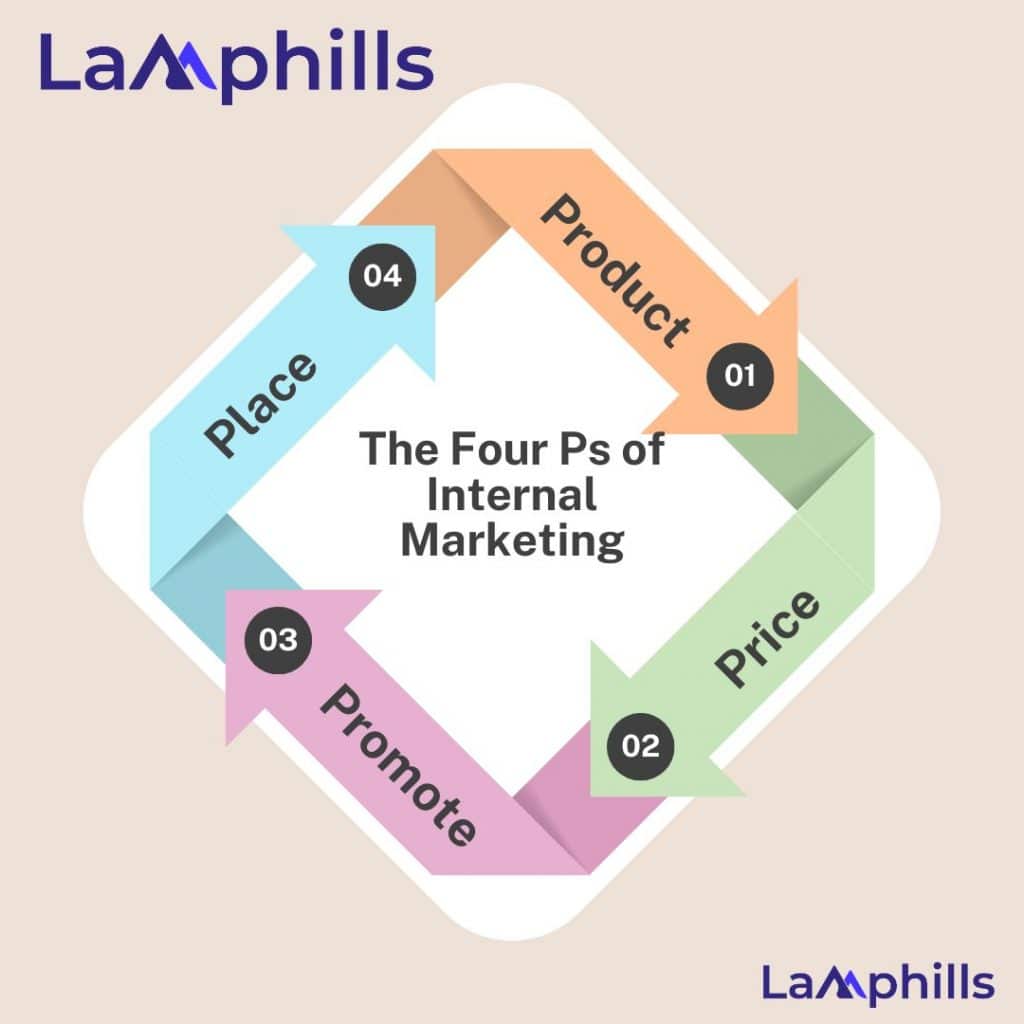Internal marketing campaigns aren’t just about promoting products, energizing teams, fostering innovation, and creating a shared vision. In my experience, launching an internal marketing campaign at a tech firm helped ignite enthusiasm for an innovation drive. We empowered teams to embrace the initiative through workshops, tailored communications, and interactive sessions, boosting collaboration and driving real change. Are you curious to learn how these campaigns can transform your workplace? Let’s explore inspiring examples and fresh ideas together.
Key Points
- Internal marketing shares essential information with employees. It ensures employees are engaged and aligned with the company’s goals, like how external marketing targets customers.
- Internal marketing campaigns involve efforts to keep employees informed, motivated, and aligned with company objectives. This helps create a positive work culture and transforms employees into effective brand advocates.
- It enhances brand awareness, boosts employee engagement, and strengthens emotional connections with the company. This positive employee experience encourages more significant effort, longer retention, and positive word-of-mouth, which is crucial for maintaining a good reputation.
- To build a successful internal marketing strategy, focus on five key components: forming a diverse team, creating a detailed plan similar to external marketing, setting clear KPIs to measure success, crafting engaging content, and choosing effective communication channels.
What is Internal Marketing?
Internal marketing involves sharing crucial information with your employees, such as product updates, organizational changes, mission statements, values, etc. While “marketing” often refers to efforts aimed at customers, internal marketing focuses on employees, ensuring they are informed, engaged, and aligned with the company’s goals.
Most people associate marketing with reaching external customers, but this is only part of the equation. High employee engagement is essential for a company to fulfill its promises to customers and achieve broader objectives. Internal marketing plays a critical role in achieving this engagement.
Internal Marketing Campaign

Credit: DC Studio
An internal marketing campaign is like a big team effort to share important information with employees, keep them motivated, and ensure they’re all on the same page about the company’s goals and values. These campaigns help create a positive work culture, engage everyone, and turn employees into brand advocates.
What are the Benefits of Internal Marketing?
Internal marketing has several key benefits: it increases brand awareness, boosts employee engagement, and creates a stronger emotional connection with the company and its mission. These elements are essential for a positive employee experience.
People want to work where they feel valued and where their contributions matter. Internal marketing goes beyond just keeping employees informed; it actively involves them.
This leads employees to put in extra effort, stay with the company longer, and spread positive word-of-mouth. Word of mouth is mighty. Half of all employees post about their company online. Positive posts can enhance a company’s reputation, while negative posts can harm it significantly.
Internal marketing is effective because it makes employees care about the organization. They feel connected to the company’s culture, inspired by how things are done, or aligned with its purpose. For instance, 73% of employees who feel they work for a “purpose-driven” company are engaged, compared to only 23% of those who don’t.
How to Build an Effective Internal Marketing Campaign Strategy

Credit: Freepik
Creating a solid internal marketing strategy takes time and effort, but you can make it work by focusing on five key components: a team, a plan, KPIs, creative content, and channels.
#1. Team
First, you need a diverse team with members from different departments. This mix ensures you have a wide range of skills. H.R. can help engage employees, marketing can provide design and content expertise, and operations can keep everything organized.
#2. Plan
Your plan should look like an external marketing plan. Here’s what to include:
Audiences: Decide who you’re talking to everyone or specific groups.
Messages: Clarify what you want employees to know and how you want them to respond.
Activities: Plan the initiatives needed to get your message across.
Resources: Identify the financial, personnel, and other resources you’ll need.
Timing: Set a schedule for when your campaign will run, launch dates, and important milestones.
Check out our Internal Communications Strategy article for some handy planning templates.
#3. KPIs
Set clear objectives to measure your campaign’s success. Define what you want to achieve, whether it’s a specific metric like 80% participation in events or a softer goal like improving workplace culture by 25%. Make sure you have a way to track these metrics.
#4. Creative
Engaging content is crucial. If your messages are dull, the results will be, too. Create bright and appealing materials to catch employees’ attention. Your marketing team can shine by making your messages eye-catching and memorable.
#5. Channels
Choose the best channels for your campaign. Some are great for immediate impact, while others are better for reinforcing messages over time. Consider using pop-up notifications for launches, digital signage and screensavers for reminders, and an employee app for updates.
Below is a marketing campaign template that can be used for your next campaign. Be sure to be descriptive and detailed when filling out the fields listed on the template.
Internal Marketing Campaign Examples
Just like with traditional marketing, you can use various tactics for internal marketing to get your employees’ enthusiastic support. This support is then communicated externally by the employees themselves. Here are some tried-and-true methods of internal marketing campaigns to consider:
#1. Consistent Communication of the Company’s Mission, Vision, & Values
These are your company’s guiding principles. It’s not enough to have them written down somewhere. You must talk about them often and you must have leaders who genuinely believe in them. Employees care about working for a purpose-driven company, which boosts their engagement. Share and discuss your mission, vision, and values regularly in weekly meetings, quarterly reviews, and performance reviews. Make them a part of the daily conversation.
#2. A Clear 1-2 Year Plan
Employees want to know what they’re working towards in the near term. While the mission and vision are great for big-picture thinking, a clear plan for the next 1-2 years helps them feel secure and optimistic about the future.
Work with leadership to create and document a one to two-year plan. Communicate this plan regularly to all employees, making sure each department understands its role in achieving it.
#3. Seeking & Acting on Employee Feedback
Listening to employee feedback shows that their voices matter. Not all feedback will be implemented, but acknowledging it is crucial.
Use tools like Google Forms or TINYpulse to gather feedback. You could also use Trello boards to provide transparency about the feedback and its implementation status. Be genuine in seeking feedback and willing to make changes based on it.
#4. Clear, Centralized Internal Communication
Effective communication is vital to any strong relationship, including the one between employer and employees. Ensure your internal marketing messages aren’t lost in the clutter of emails and chats. Use a dedicated, centralized communications hub for internal marketing messages. For these bigger-picture communications, avoid traditional channels like email and focus on platforms designed for this purpose.
Read: External vs Internal Communication: Understanding the Key Differences and Their Importance
#5. A Social Media-Friendly Environment
Many employees are active on social media and talk about their workplace. They must do this in a way that supports the business. Create a social media policy that embraces social media use in the workplace. Set clear expectations for online behavior and allow employees to share pre-approved content with their networks through an employee advocacy program.
#6. Better Learning & Development
Employees value training and development opportunities. Investing in these areas can improve retention and employee satisfaction.
Start by identifying skills gaps. Ask employees where they feel they need development. Then, create targeted training programs to fill these gaps.
#7. Provide the Benefits Employees Want
Beyond salary, employees value benefits like flexible hours and work-life balance. These can often influence job satisfaction more than higher pay. Survey employees to find out which benefits they value most. Work with H.R. and leadership to implement at least one of these benefits, keeping cost-effectiveness in mind.
#8. Eat Your Own (Product/Service) Dogfood
Using your products or services helps employees understand them better and become better ambassadors for the company.
Make your product or service available to employees. If giving full access isn’t feasible, offer limited access or special perks. This helps employees relate to the customer experience.
These are just a few examples of running effective internal marketing campaigns. The key is being creative and consistent, ensuring employees feel informed, valued, and engaged.
Internal Marketing Campaign Ideas
On the surface, the idea is simple, get your team involved in your marketing strategy. Employees who understand how your products and services help people become better advocates and champions for your business. Here are some easy-to-follow Internal Marketing Campaign ideas:
#1. Mission, Vision, and Values Week
This helps everyone get on the same page about what the company
- Dedicate a week where each day focuses on a different part of your company’s mission, vision, and values.
- Have workshops, presentations from leaders, and interactive sessions where employees can share their thoughts.
- Use posters, emails, and intranet posts to highlight key messages.
#2. Employee Recognition Program
People love to be appreciated. Recognizing hard work boosts morale and motivation.
- Please set up a monthly or quarterly program where employees can nominate their peers for doing great work.
- Announce winners in company newsletters, on social media, and in meetings.
- Offer rewards like gift cards, extra time off, or a prime parking spot.
#3. Idea Box Challenge
This encourages innovation and shows employees that their opinions matter. How to Do It:
- Have a physical or digital box where employees can submit ideas for improving the company.
- Review the best ideas each month and discuss them in meetings.
- Implement the best suggestions and give credit to the contributors.
#4. Health and Wellness Initiatives
Promoting health shows that you care about employees’ well-being. How to Do It:
- Organize fitness challenges, yoga classes, or wellness workshops.
- Provide healthy snacks in the office and access to wellness resources.
- Partner with local gyms to offer discounts to employees.
#5. Team Building Activities
These activities help strengthen teamwork and collaboration. How to Do It:
- Plan regular team-building events like escape rooms, cooking classes, or outdoor activities.
- Hold team-building exercises during company retreats or offsite meetings.
- Encourage departments to organize their own more minor activities.
#6. Internal Newsletters and Blogs
Keeping everyone informed helps create a connected and engaged workforce. How to Do It:
- Publish a weekly or monthly newsletter with company news, employee spotlights, and upcoming events.
- Invite employees to contribute articles, photos, and stories.
- Use the newsletter to communicate important updates and celebrate achievements.
Read: 2024 Digital Marketing Trends: What You Need to Know
#7. Lunch and Learn Sessions
These sessions provide a casual way to learn and grow together. How to Do It:
- Schedule regular lunchtime sessions where employees can learn about different topics.
- Invite guest speakers or have team members share their expertise.
- Provide lunch to make it a fun and engaging experience.
By involving your team in these activities, they’ll start to see how your products and services make a difference. In turn, they’ll become more effective advocates and champions for your business.
Download the Internal Marketing Campaign Launch Checklist now and pave the way for a successful campaign launch!
The Four Ps of Internal Marketing
Here are the four Ps of internal marketing; see the infographics below

Marketers use the Four Ps framework Product, Price, Promotion, and Place to plan their strategies for selling to external clients. We can significantly improve our internal communications by adapting these concepts for internal use. Here’s how:
#1. What’s the ‘Product’ Being Sold?
Product refers to the behaviors, attitudes, and values we want our employees to adopt. For example, if we’re rolling out a new survey, the ‘product’ is the survey itself and the expectation that employees will complete it.
#2. What is the ‘Price’ for Internal Customers?
Price involves the value exchange, not necessarily money. It can also mean the psychological cost. For instance, if we ask employees to change how they work, the ‘price’ could be the mental effort required to adjust to a new system. In our survey example, the ‘price’ is the time employees spend filling it out, which they could otherwise spend on their regular tasks.
#3. How Are You Going to Promote It?
Promotion is about how you inform and persuade employees. Just asking isn’t enough. We must explain why the survey is essential and how it benefits everyone. Quality matters more than quantity in our communications. We should always clarify why the issues of study in every message we send.
#4. Choosing the Right Channel
Place is about selecting the best channel to deliver your message. Should it be an email, a presentation, or a one-on-one meeting? Would an all-staff email work for the survey, or should we first get our internal influencers on board? Choosing the right channel ensures that our message is effectively received.
Related Post
Content Marketing for Startups: Growth Hacking Secrets for Explosive Traffic
External vs Internal Communication: Understanding the Key Differences and Their Importance
Everything You Need to Know About Content Marketing Tools (Plus Best Picks)






